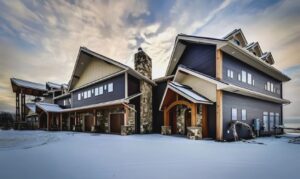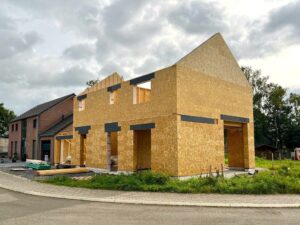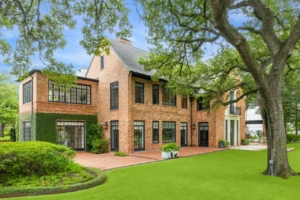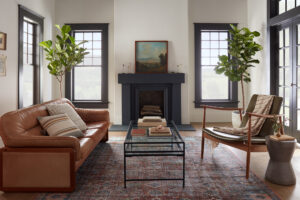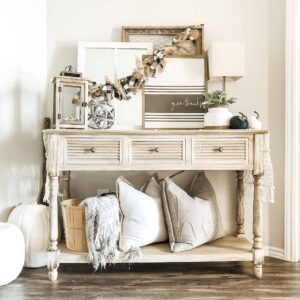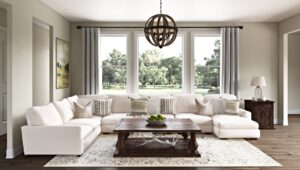Ranch Houses: A Slice of Americana and the Evolution of a Timeless Design

The warm afternoon sun cast a golden glow on the one-story house, its wide eaves offering welcome shade over the front porch. The simple yet elegant lines of the house blended seamlessly with the landscape — a perfect reflection of the open, relaxed lifestyle that drew Sarah and her family to this ranch-style home in the first place. She smiled as she stood in the open-plan living room, with the kitchen just a few steps away and large windows looking out to the backyard. This was precisely what they wanted — a home that combined simplicity, practicality, and a connection to the outdoors. Like many American families, Sarah’s homeownership dream was rooted in the appeal of the ranch house, a style that has endured for decades, representing both tradition and modernity.
The Origins of the Ranch House: A Mid-Century Marvel
The ranch house, also known as the “rambler” or “California ranch,” is an architectural style that emerged in the United States in the 1920s. However, it wasn’t until after World War II that the design became one of the most popular in suburban America. The Ranch Houses is characterized by its low, extended profile, simple floor plan, and emphasis on indoor-outdoor living. This style was heavily influenced by Spanish colonial architecture, particularly the single-story adobe houses of the American Southwest, as well as the informal, open floor plans seen in rural farmhouses.
The appeal of the ranch house was in its simplicity and adaptability. Designed for practicality, these homes typically featured large picture windows, sliding glass doors leading to patios, and attached garages — elements that catered to the postwar suburban family’s desire for comfort and space. According to the National Trust for Historic Preservation, the ranch house symbolized the “American Dream,” offering families an affordable yet stylish home that could be quickly built in suburban developments.
The Rise of the Ranch: Popularity in Post-War America
After World War II, the United States saw a housing boom, and the ranch-style home became the default choice for many developers. The postwar economic boom led to suburban growth, with millions of Americans moving from crowded urban areas to newly built suburbs. This trend, combined with the baby boom, created a surge in demand for affordable, functional housing — and the ranch house was ideally suited to meet that need.
Between the 1940s and the 1970s, ranch houses accounted for more than 60% of all new homes built in the U.S., according to The National Association of Home Builders (NAHB). By 1950, the ranch house had become America’s most common housing style, particularly in the rapidly expanding suburbs of cities like Los Angeles, Phoenix, and Dallas.
The architecture of ranch houses reflected the postwar ideal of family life, emphasizing open spaces, functional design, and casual living; in contrast to earlier generations’ more formal and compartmentalized homes, ranch houses featured open floor plans that allowed for easy movement between living, dining, and kitchen areas. This layout was ideal for the growing suburban family and a perfect setting for entertaining guests in the new era of backyard barbecues and suburban leisure.
Characteristics of a Classic Ranch House
Ranch houses are often distinguished by several key design elements that set them apart from other architectural styles:
- Single-Story Layout: Ranch houses are typically one-story homes, although some versions, such as the raised or split-level ranch, have multiple levels. The single-story design is ideal for accessibility, making these homes particularly popular among older adults and families with young children.
- Open Floor Plans: The interior of a ranch house usually features an open floor plan, with the living room, dining area, and kitchen flowing seamlessly into one another. This design promotes a casual, family-oriented atmosphere.
- Large Windows and Natural Light: Ranch houses often feature large picture windows, allowing for abundant natural light and creating a visual connection between the indoors and outdoors. Sliding glass doors leading to patios or backyards are also a common feature.
- Integration with Nature: One of the defining characteristics of a ranch house is its focus on blending with the surrounding landscape. Many ranch homes have wide eaves and low roofs, giving them a horizontal profile that complements their natural environment. Additionally, patios and outdoor living spaces encourage homeowners to enjoy the outdoors.
- Attached Garage: Unlike earlier housing styles, ranch houses typically have attached garages, reflecting the increasing importance of the automobile in postwar America.
The Decline and Resurgence of the Ranch House
While ranch houses were the dominant architectural style of the 1950s and 1960s, their popularity began to wane in the 1970s. The growing appeal of two-story homes and the rise of neo-colonial and neo-Victorian styles led many homebuyers to seek more “formal” and ornate homes. The oil crisis of the 1970s also played a role, as ranch houses were often built with sprawling floor plans that required more energy to heat and cool, making them less appealing during energy scarcity.
However, in recent years, the ranch house has experienced a resurgence in popularity, driven by several factors. According to a report by Zillow, mid-century modern homes, including ranch houses, have become increasingly sought after by homebuyers who appreciate their simplicity, functionality, and connection to the outdoors. Many millennials, in particular, are drawn to the open floor plans and understated style of ranch homes, which align with their preferences for minimalist and practical living spaces.
Additionally, the aging population in the U.S. has contributed to a renewed interest in single-story homes. As more baby boomers enter retirement, there is increased demand for accessible, low-maintenance homes — and ranch houses are an ideal fit. According to a 2022 study by the National Association of Realtors (NAR), single-story homes, including ranch-style houses, are among the most popular housing choices for older adults, with nearly 60% of baby boomers preferring one-story living.
Ranch Houses and the Real Estate Market
Ranch houses remain desirable for many homebuyers, and their presence in the real estate market reflects this demand. According to Redfin, homes listed as “ranch” styles sold faster than the national average in 2022, with many buyers seeking out mid-century properties for their classic appeal. The report notes that ranch homes, especially those updated or renovated, tend to command higher prices than comparable two-story homes in some regions.
For example, in cities like Los Angeles, where mid-century modern design has revived, ranch houses in neighborhoods such as Palm Springs, Eagle Rock, and Glendale have become highly sought after. According to Realtor.com, mid-century ranch homes in these areas can sell for upwards of $1.5 million, depending on their condition and location. Similarly, in regions like Texas and Arizona, where ranch homes were once ubiquitous, buyers pay premiums for well-preserved or renovated examples of this classic American style.
The Future of Ranch Houses: A Timeless Design for Modern Living
As housing trends continue to evolve, the ranch house’s simple, functional design ensures its relevance for years. With the growing focus on sustainability and energy efficiency, many homeowners are renovating older ranch homes to incorporate modern, eco-friendly features such as solar panels, energy-efficient windows, and updated insulation. In doing so, they are blending the best of mid-century design with future technology.
Additionally, the trend toward aging in place — the idea that older adults should be able to stay in their homes as they age — has made the ranch house an attractive option for long-term homeownership. With its single-story layout and easy accessibility, the ranch house offers a practical solution for those seeking a home that can adapt to changing needs over time.
Conclusion
From its origins in the early 20th century to its resurgence in popularity, the ranch house remains an enduring symbol of American architecture. Its open floor plan, connection to nature, and practicality have made it a favorite for generations of homeowners. Whether you’re drawn to its mid-century charm or its modern adaptability, the ranch house continues to offer a lifestyle that resonates with the values of simplicity, comfort, and a deep connection to home.

